What is “Umeboshi”? Different Types and How to Choose
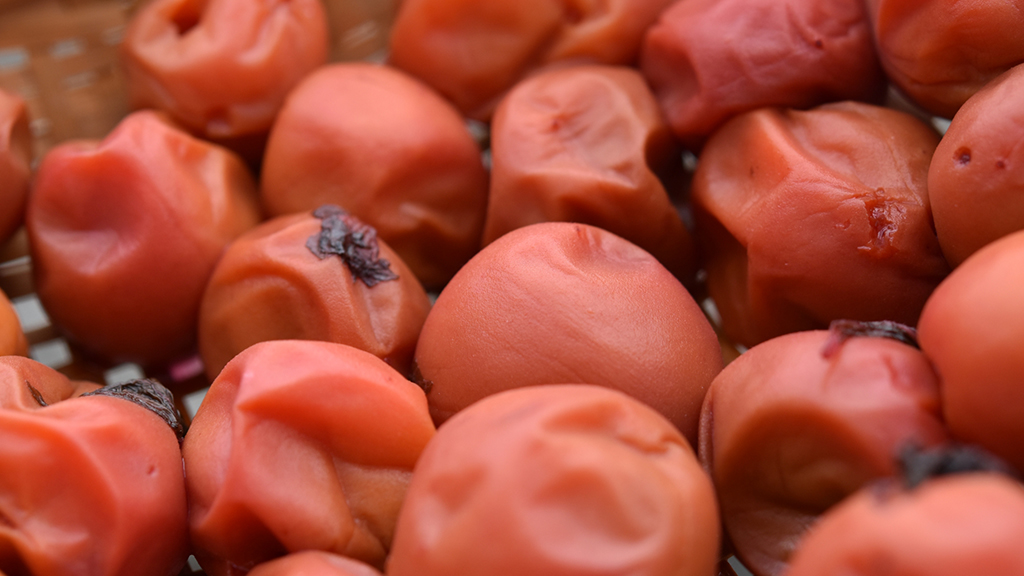
This post is also available in 日本語
This is the preserved food in which the fruit of a plum, pickled in salt, is dried in the sun. The traditional Japanese “umeboshi” is both extremely sour and salty at the same time, giving it a highly distinctive taste. It is often used as the filling for “onigiri” or eaten with rice, and has been loved in Japan since ancient times as a health food.
On this occasion, I will introduce you to the charms of “umeboshi” and recommend some recipes for you to eat it with.
Contents
What is “umeboshi”?
Originally, it is light brown in color. When salted along with red perilla, it is dyed red. There are a wide variety of types, including soft, moist large plums, crunchy, hard, small ones, and ones that are sweetened with honey. Previously, they were often salted at home, but now it is common to purchase them in stores. In particular, the “Nanko-ume”, from Wakayama prefecture, are a popular brand.
Originally, plums had a salt content of 20% or more so that they could be stored for long periods of time. Recently, however, there are plums with reduced salt and easy-to-eat plums have become popular. You should note that those with a low salt content tend to have a shorter “best before” date.
Types of “umeboshi”
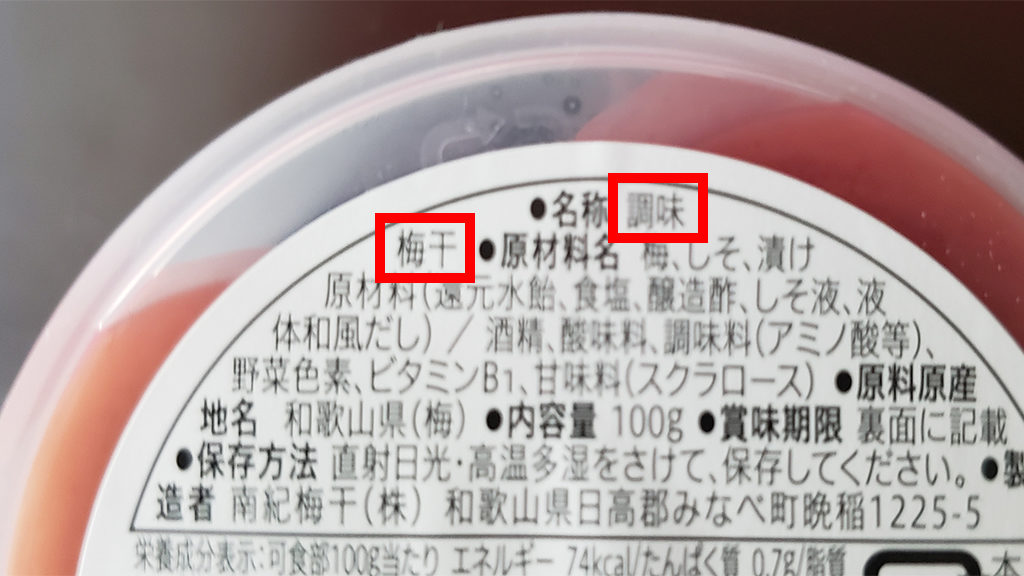
- “Umezuke”
The plum is pickled in salt and has a crunchy texture. - “Umeboshi”
This is dried “umezuke”. They are simultaneously both extremely sour and salty at the same time. - “Chomi umezuke”
This is “Umezuke” with flavor added, without drying. It is easy to eat, but the “best before” date is short. - “Chomi Umeboshi”
This is “Umeboshi” with flavor added. It is easy to eat, but the “best before” date is short.
Currently, nearly all of the products that you will be able to purchase in a supermarket or convenience store will be “Chomi Umezuke” or “Chomi Umeboshi”. The “Umezuke” or “Umeboshi” are placed in water etc. to remove the salt etc. and a flavor like honey, soup stock, bonito, or kelp is added.
There is also “Hoshiume”, where the “umeboshi” is further dried and sweet flavor added, and “Karikari Ume”, where a blue plum is salted and soaked in a seasoning liquid containing calcium.
One a day keeps the doctor away
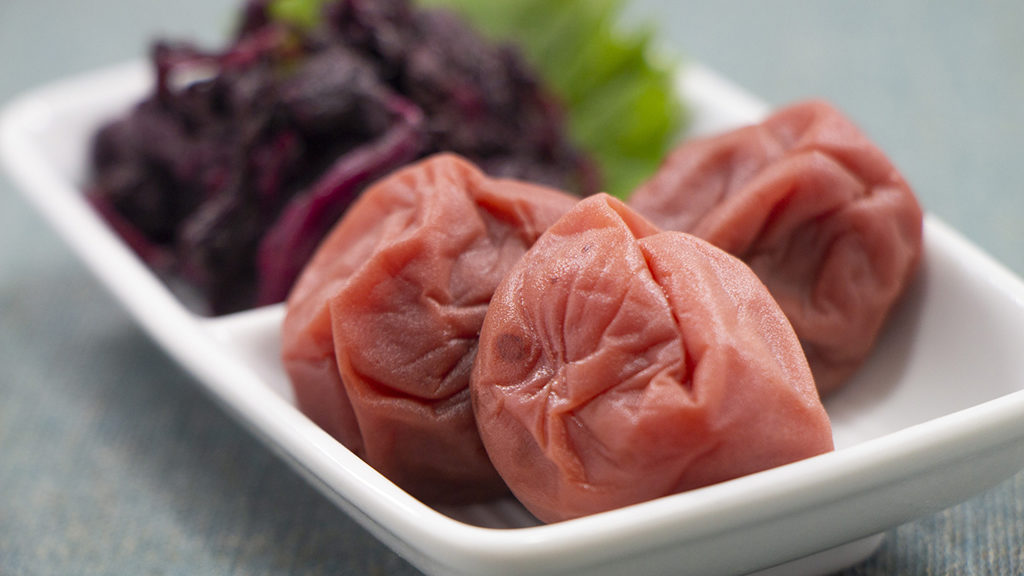
Umeboshi is not only a preserved food. Since ancient times, it has been a health food with the motto “one a day keeps the doctor away”.
No appetite! Legs feel weak!
The reason that “umeboshi” are sour is that they contain citric acid and malic acid. As they are sour, they may be mistaken for an acidic food, but in fact they are alkaline. If you have a tendency to eat more acidic foods, including them in your diet will help to give it balance.
Citric acid, stimulates the secretion of saliva, promoting good appetite, and encourages the working of the stomach and intestines, increasing the efficiency of digestive absorption. As this aids the absorption of calcium, it is recommended that you eat it with foods containing calcium, such as cheese and blue fish. It also helps to inhibit lactic acid, which is a cause of fatigue.
Youthfulness
The polyphenol and vitamin E contained in plums prevents aging of the blood vessels and skin cells. It has also gained attention as a means of preventing influenza.
One a day
However good a food is for you, it is necessary to take care not to eat too much of it. The traditionally made “umeboshi” contains over 20% or more salt. Stick to one per day.
https://fooddb.mext.go.jp/index.pl
Ways of eating “umeboshi” / recommended recipes
“Umeboshi” can be eaten as is or chopped before eating. They can also be put on rice in a lunch box, or used as the filling for “O-nigiri” or “O-chazuke”, and in particular they go well with rice.
The type that has the seed removed is called “Bainiku”. This is used as a condiment by making into a paste. You can also buy paste products in a tube at supermarkets and convenience stores.
Rice and noodles
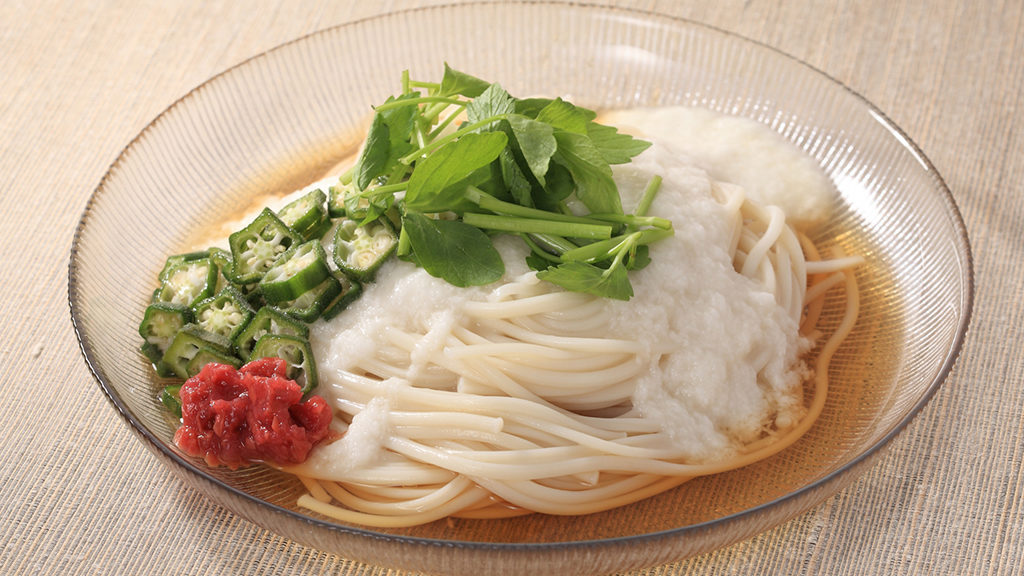
We recommend eating it not only with rice, but also with pasta, and noodles such as “udon”. It is also refreshing and easy to eat in summer when people tend to have less appetite.
Salad and “Aemono”

“Umeboshi” goes well with vegetables and tofu etc! The paste can be placed as is on tofu and eaten with cucumber to make a side dish. We recommend a dressing for salad using “bainiku”.
Meat & fish
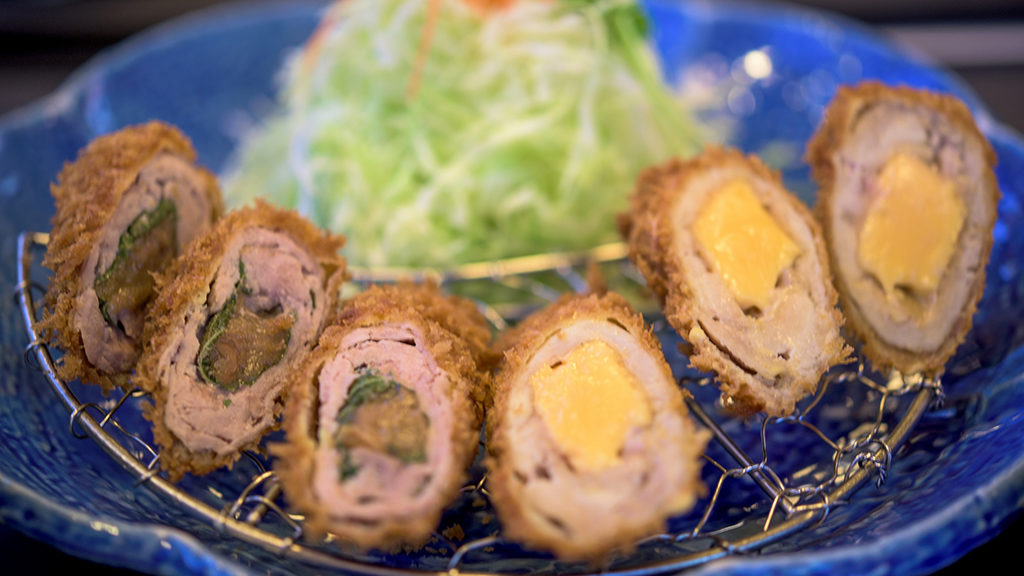
Citric acid contained in the “umeboshi” has the effect of suppressing odor, and is often used when cooking blue fish. It is also prepared with boiled meat and fish, and fried together. It can also be applied to a wide variety of recipes, in which it is inserted inside and then deep-fried.
- What are “Wagara (traditional Japanese patterns)”? Meaning and Prayers Accompanying the Main Japanese Patterns
- Types of Sushi and Its History
- Easily Explained. What is “Furusato Nozei”?
- Katakana words, what do they mean? “Icons, remote controls, computers…”
- [2021 | Tokyo] Four Japanese language schools recommended









